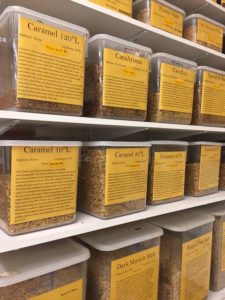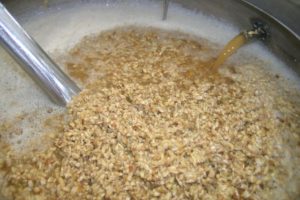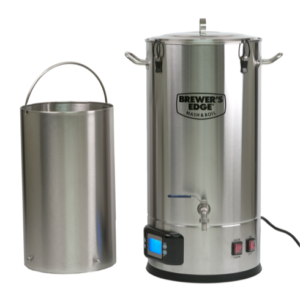-Ryan Blankenship-

All great beer begins with the mash. So what actually happens when we’re mashing grain? In a nutshell, the mash is a process in which malted grains are mixed with water at a specific ratio, temperatures, and pH in order to activate the enzymes in the malt and convert the starches in the grain into fermentable sugars. If grain goes unmalted, then the starches bound in the grain are inaccessible to yeast due to the size of the molecule. This can sometimes be desirable, however, as those unfermentable compounds add body and such.
For the beginning brewer, a single infusion is the easiest mash profile to start with. A Single Infusion Mash describes mashes in which you bring a single volume of strike water to a single desired temperature and you hold the mash within these parameters for at least one hour. After your mash has finished, then you will drain the mash and either sparge or begin your boil. This is by far the easiest and most common mash profile used. The Single Infusion refers to the fact that you are working with one single addition (infusion) of water for the entire mash process.

A Step Mash is differentiated from a Single Infusion Mash in that a step mash will require multiple water additions and/or multiple temperature ranges. There are several reasons to perform a step mash. One of these is the fact that there are certain grains that require a more robust treatment in order to yield fermentable sugars, break down compounds, or otherwise address some aspect of the grain’s properties. Some say that a step mash isn’t necessary any more with the well-modified malts that we have now, but I feel I have more control over the body of a beer using a step mash. The reason for this is that between 130-150˚ F beta amylase is produced. This enzyme is responsible for creating non-fermentable sugars. At 140-160˚ F alpha amylase is produced. This enzyme is responsible for creating fermentable sugars. What this means is during the step mash you can have a rest at 130-139° F and produce more non-fermentable sugars to help create more body in your beer.

After brewing for several years and trying both methods, it’s my opinion that I have more control on the final output of a beer using a step mash. Although it takes almost twice as long using a step mash than a single infusion, the quality is better. There have been a number of recently released products in the Brewing World that make both single infusion and step mashes easier than ever to perform! Check out the Brewer’s Edge Mash and Boil Unit and The Grainfather for more info!

Tom says
You’ve got your beta and alpha mixed up.
Beta range creates the highly fermentable sugars and alpha (at the higher end of the temp scale) is the less fermentable dextrins.